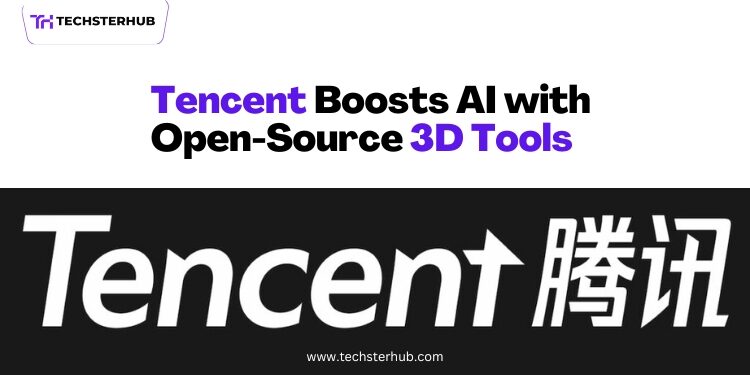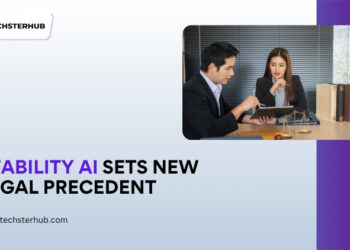Tencent, one of China’s largest technology companies, has made waves in the tech industry with its latest move: expanding its artificial intelligence (AI) capabilities by launching open-source 3D generation tools. This bold step signals the company’s commitment to leading the way in AI innovation, especially in the field of 3D modeling and virtual reality. But what does this mean for the future of AI, gaming, entertainment, and creative industries? Let’s dive into the details of Tencent’s new AI push and its potential impact.
What is Tencent and Why is This Important?
Tencent is a Chinese multinational conglomerate that is best known for its dominant position in the gaming industry, with hit titles like Honor of Kings and PUBG Mobile. In addition to gaming, Tencent is involved in a wide range of industries, including social media, entertainment, digital services, and even fintech. The company has built a reputation for investing heavily in technology and innovation, particularly in AI, which is reshaping industries worldwide.
Tencent’s move to launch open-source 3D generation tools reflects the company’s growing focus on AI and its drive to make these technologies more accessible to developers, creators, and businesses around the globe. This development not only strengthens Tencent’s position as a leader in the AI space but also opens the door for exciting new possibilities in the creation of 3D content for virtual reality (VR), gaming, filmmaking, and much more.
What are 3D Generation Tools?
3D generation tools are software tools that allow creators to design and generate three-dimensional objects, environments, or characters in digital space. These tools are used across various industries, including video game development, animation, architecture, virtual reality (VR), and even medical imaging.
Creating 3D models can be a time-consuming and resource-intensive process, especially for beginners or smaller development teams. However, thanks to advancements in AI, tools are being developed that make it easier to generate 3D content automatically or with minimal input from users. With AI-powered 3D generation tools, creators can input basic instructions or sketches, and the AI system can then generate high-quality 3D models, saving time and effort.
Tencent’s decision to make these tools open-source means that the technology will be available for anyone to use, modify, and improve. This move is expected to democratize access to advanced AI tools, allowing developers and creators, regardless of their background or resources, to take advantage of the latest innovations in 3D generation.
Why is Tencent Focusing on AI and 3D Generation?
Tencent’s decision to focus on AI and 3D generation tools is a strategic one. Here are a few reasons why the company is making this move:
- The Growing Demand for 3D Content: With the rise of virtual reality (VR), augmented reality (AR), and gaming, there is an increasing demand for high-quality 3D models and environments. For instance, VR games and applications require realistic and immersive 3D content, while movies and TV shows are relying more on 3D animation and visual effects. As these industries grow, so does the need for more efficient tools to create 3D content. Tencent is positioning itself as a leader in fulfilling this demand.
- Enhancing the Creative Process: Traditional 3D modeling can be difficult and time-consuming. By introducing AI-powered 3D generation tools, Tencent aims to streamline the creative process. These tools will enable artists, developers, and designers to create complex 3D models more quickly and easily. For example, instead of manually sculpting each detail of a 3D model, creators can use AI to automatically generate the basic shapes and details, which can then be fine-tuned for greater precision. This could be a game-changer for industries like gaming, animation, and architecture.
- Expanding Tencent’s Influence in AI: Tencent is investing heavily in AI research and development, recognizing its potential to transform a wide range of industries. By making 3D generation tools open-source, Tencent can contribute to the global AI community, encouraging collaboration and innovation. This move not only strengthens Tencent’s position as a leading player in AI technology but also expands its influence in creative industries.
- Creating New Business Opportunities: By offering AI-powered tools, Tencent can tap into the growing market for creative and development software. Developers, artists, and content creators who previously lacked access to advanced 3D modeling tools will now be able to use Tencent’s AI-driven solutions. This will help Tencent gain traction in new markets and further solidify its position in the global tech ecosystem.
What Makes Tencent’s Open-Source 3D Tools Special?
While many companies are working on AI-powered 3D tools, Tencent’s decision to make its technology open-source sets it apart from the competition. Here are some key features that make Tencent’s 3D generation tools unique:
- Accessibility and Collaboration: Making the tools open-source means that anyone—from individual creators to large companies—can use, modify, and contribute to the project. This approach fosters collaboration and innovation, allowing developers to share ideas, improve the tools, and create new applications for them. It also lowers the barriers to entry for smaller teams and independent creators, giving them access to advanced tools that were previously out of reach.
- AI-Powered Efficiency: One of the standout features of Tencent’s 3D generation tools is their use of artificial intelligence to speed up the creative process. AI can help automate tasks like model generation, texture mapping, and environment design. By using AI, these tools can generate 3D models based on minimal input, allowing creators to focus on the finer details and creative aspects of their work. This efficiency is particularly useful for industries like gaming, where speed and quality are essential.
- Customization and Flexibility: Open-source tools allow developers to customize and adapt the software to meet their specific needs. Whether it’s modifying the algorithms to create more realistic models or integrating the tools into existing pipelines, the flexibility of open-source software gives users greater control over their projects. This is a major advantage for businesses and creators who want to tailor the tools to their unique requirements.
- Community Support and Growth: The open-source model encourages a community-driven approach to development. Users can contribute improvements, report bugs, and share their work with others. This creates a thriving ecosystem of developers and creators who can support one another and push the boundaries of what’s possible with the tools.
How Will This Affect the Industry?
Tencent’s move to release open-source 3D generation tools is poised to have a significant impact on multiple industries:
- Gaming and Virtual Reality: The gaming industry is one of the primary beneficiaries of these tools. Developers will now be able to create high-quality 3D environments and characters more efficiently, resulting in faster game development cycles. VR and AR applications will also benefit from the availability of realistic 3D models, creating more immersive and engaging experiences for users.
- Animation and Filmmaking: In the world of animation and filmmaking, 3D modeling is an essential part of the production process. Tencent’s tools will allow animation studios to speed up their workflows, cutting down the time and cost of creating complex 3D scenes. This could lead to more innovative and visually stunning content across movies and TV shows.
- Architecture and Design: Architects and designers can use Tencent’s 3D generation tools to create detailed, interactive 3D models of buildings and spaces. This technology could revolutionize how designs are visualized, making it easier to communicate ideas and concepts with clients and collaborators.
- Education and Training: By providing access to open-source AI tools, Tencent is enabling educational institutions and training programs to teach students how to work with advanced 3D modeling technologies. Students and professionals alike will benefit from learning how to use AI-driven 3D generation tools, preparing them for careers in industries like gaming, design, and filmmaking.
The Future of AI in 3D Generation
Tencent’s expansion into AI-powered 3D generation tools is just the beginning of what could be a transformative shift in the creative industries. As AI continues to advance, we can expect even more powerful tools to emerge, helping creators produce high-quality content faster and more efficiently than ever before.
This move also signals a broader trend in the tech industry, where AI is becoming an integral part of creative processes. Companies like Tencent are pushing the boundaries of what’s possible with AI, and their open-source approach will encourage collaboration and innovation on a global scale.
Conclusion
Tencent’s expansion of AI-powered open-source 3D generation tools represents a major step forward for both the company and the tech industry as a whole. By democratizing access to advanced 3D modeling tools, Tencent is helping to accelerate creativity and innovation in industries like gaming, filmmaking, architecture, and more. The availability of these tools will empower creators around the world to bring their visions to life in ways that were previously unimaginable.
As AI continues to shape the future of technology, Tencent’s open-source 3D generation tools are just one example of how AI is transforming creative industries. With greater efficiency, customization, and collaboration, these tools have the potential to change the way we create, experience, and interact with 3D content in the years to come.











